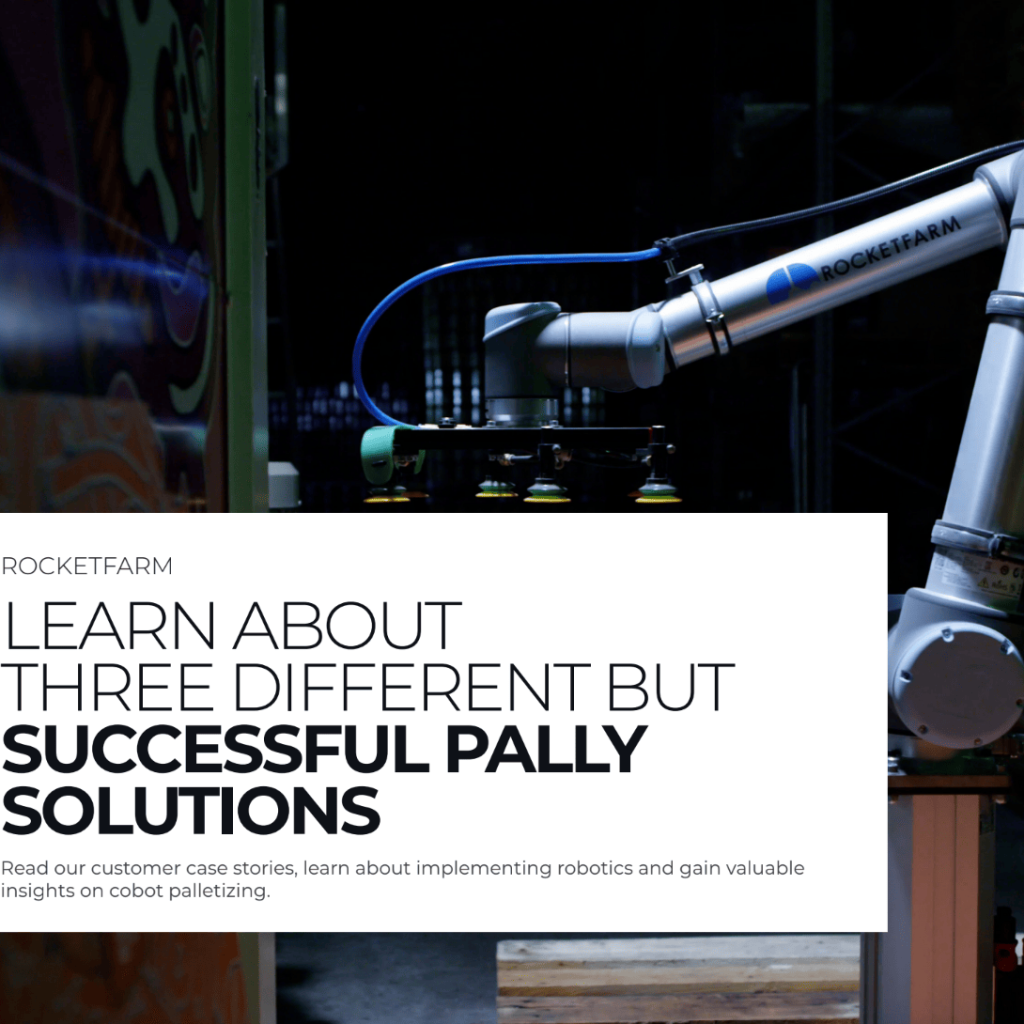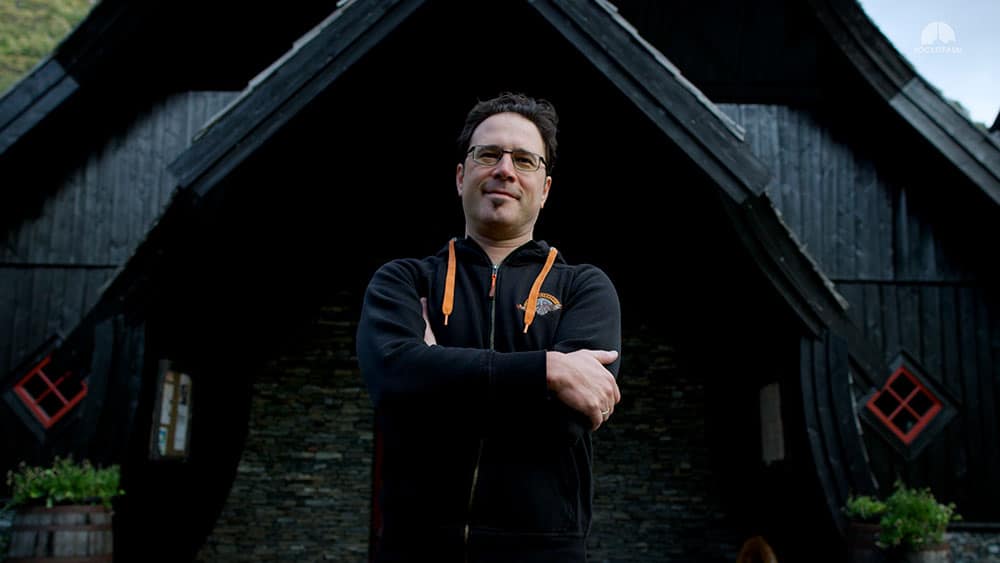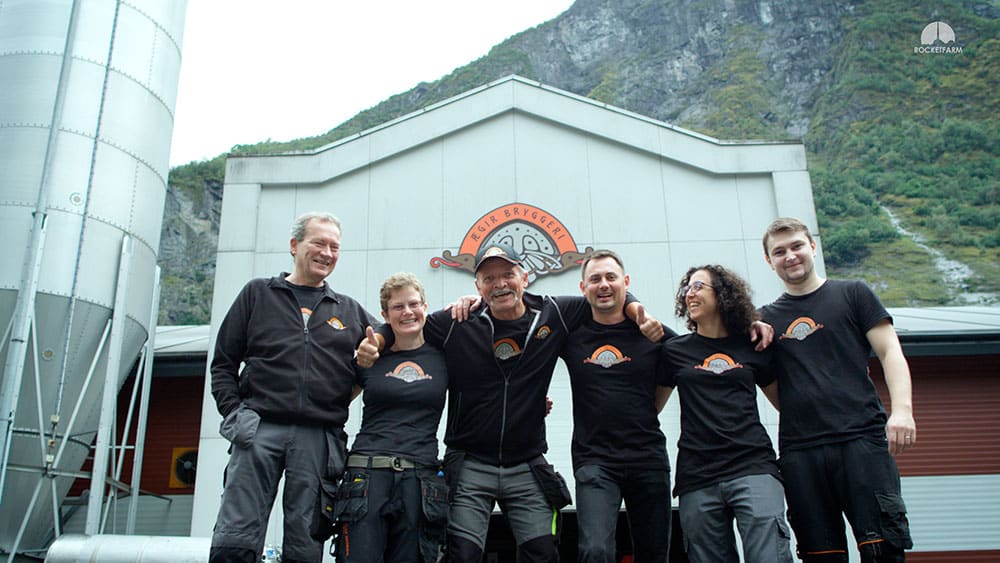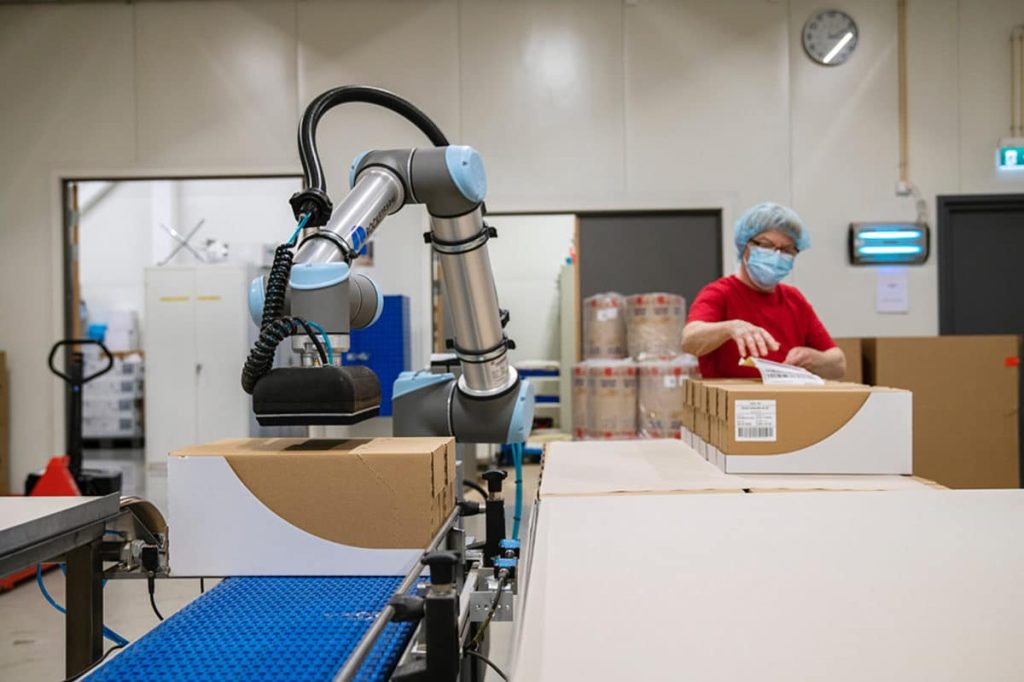Meet PAL.co, the palletizing cobot brought to life through a collaboration
between Rocketfarm and System Integrator Stimba.
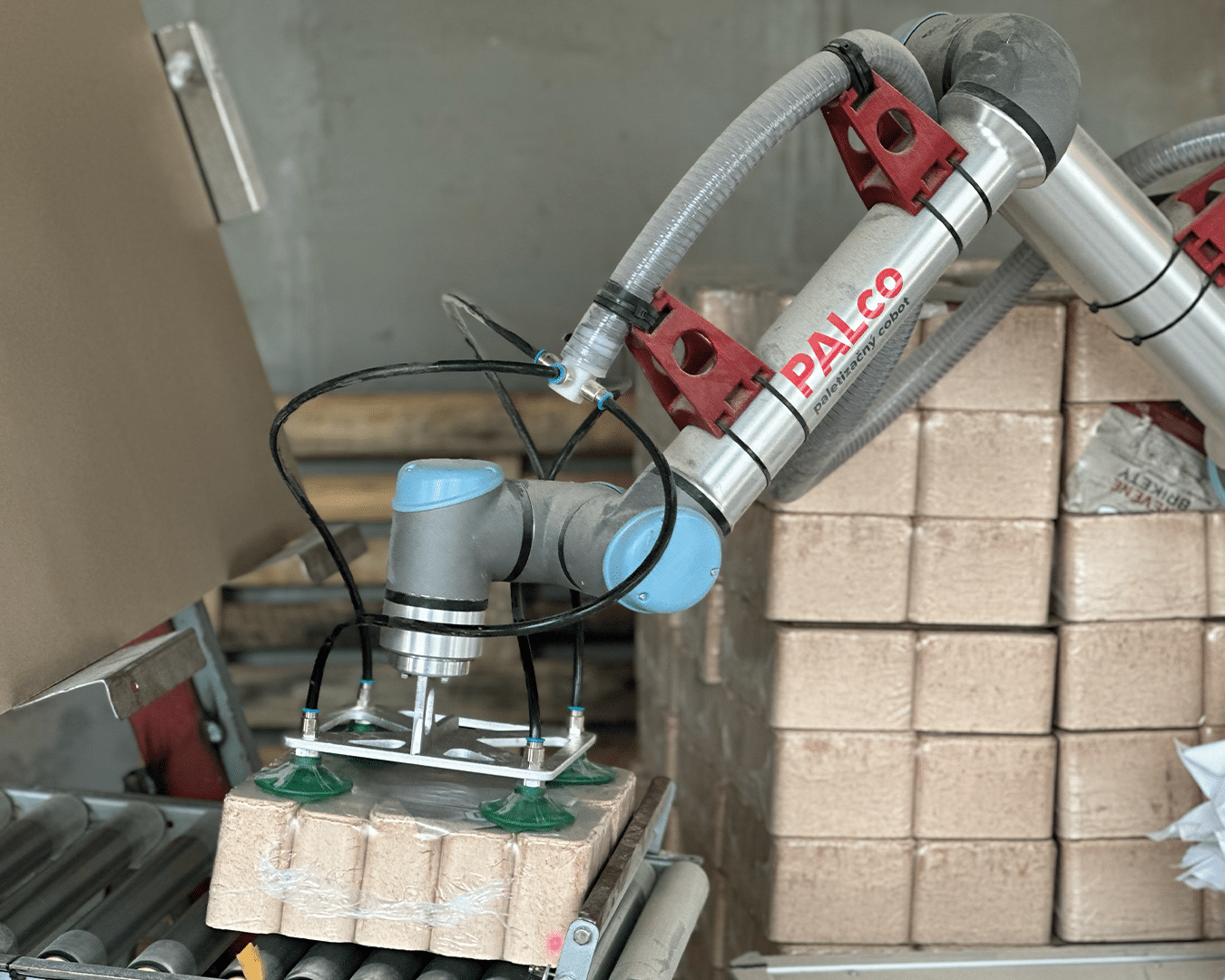
Cobots, or collaborative robots, are becoming increasingly popular in the manufacturing industry for palletizing tasks. Palletizing involves heavy and repetitive lifting, which can be difficult and even dangerous for human workers. Due to the challenging nature of the task and the difficulty of finding workers willing to do it, palletizing is a prime candidate for automation.
And even though you might think so, cobot palletizing is not limited to large-scale production in industrial areas close to cities. Small businesses located in remote areas, such as the woods of Slovakia, can also benefit from using cobots for palletizing tasks.
Read our article “Get happy employees with a palletizing solution“
The people are focusing on other tasks
The owner of Ekopal, a small producer of wood pellets in the Slovakian forests near Banská Bystrica, wanted to do something good for his employees. He wanted to relieve them from the heavy lifting of wood pellet bales daily.
What did he do? He hired a robot.
Have a look at it palletizing:
The palletizing cobot, PAL.co from Rocketfarm partner and System Integrator Stimba, has now been palletizing tirelessly for a year and has relieved the seven employees at Ekopal from lifting and palletizing hundreds of 10kg bales of wood pellets. The palletizer is placed in a challenging and dusty environment; it doesn’t take up much space and continuously palletizes the heave bales.
No one at Ekopal has lost their job to robots. Instead, they now focus on tasks such as machine maintenance and logistics, which are more satisfying and less tiring.
Insights on the application
With a standardized solution, you can also benefit from state-of-the-art digital twin technology to verify, engineer, and support your projects without needing physical component assembly.
The PAL.co solution at Ekopal was installed by Stimba, a Rocketfarm partner and Slovakian System Integrator. They report that the application installation was complex and lacked reliability.
The lifting column faced a significant challenge due to the dusty environment, but it is covered with a textile suit for protection. The palletizer handles bales of heavy wooden products inside thin plastic, which can cause dimensional instability and lead to collisions between packages. However, the intuitive user interface of Pally, our palletizing URCap, allows employees to quickly and easily correct these issues independently.
At Ekopal, the cobot palletizer is used for several different products. For some products, a shim paper is needed between particular layers for stability, while for others, interlocking layers are used for stacking. The employees only need to switch between pallet patterns when handling different products.
Read our article “How to put together a great palletizing solution“
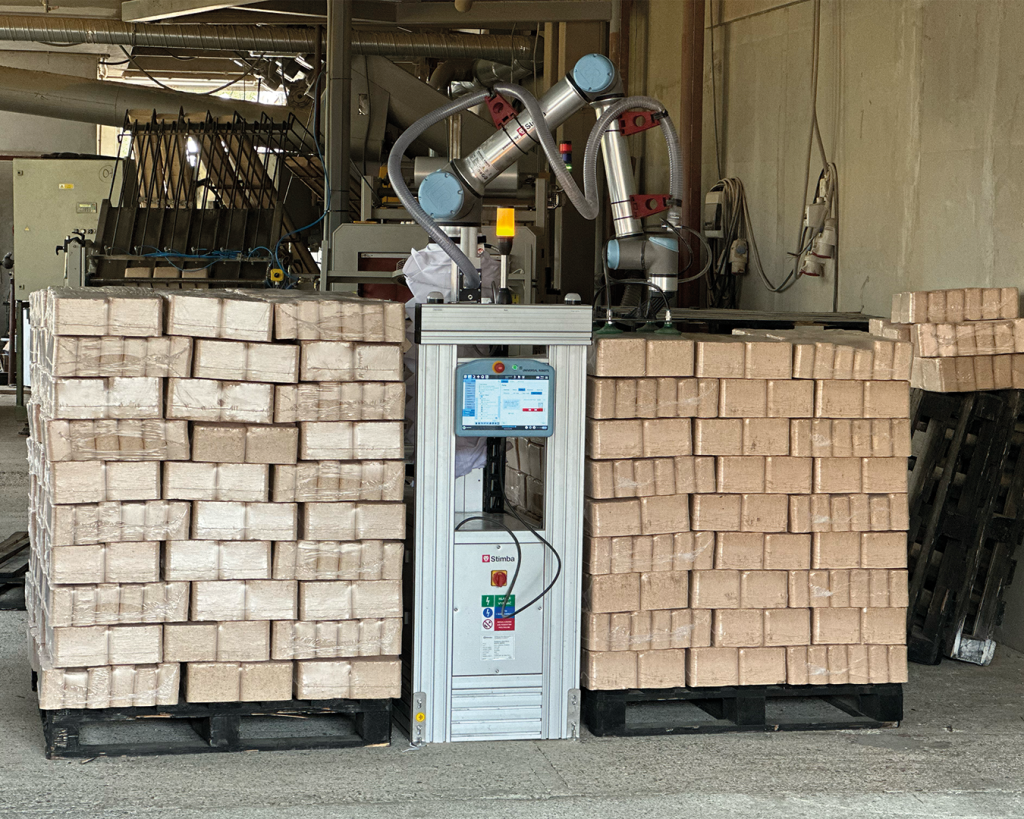
Every business can benefit from using cobots
Automation is generally associated with large industrial complexes with robots performing various tasks wherever you twist your head. However, many small to large businesses now incorporate robots, particularly cobots, in their regular operations. For instance, Ekopal in Slovakia still relies mainly on manual labor but has automated some of its tasks with cobots.
That is the principal advantage of cobots: They are cost-effective and do not require much space, making them suitable for palletizing and other applications.
If you want to learn more about how using cobots for palletizing can help your colleagues, sign up for our newsletter and receive a free eBook on palletizing.
Sign up for our newsletter and get a FREE ebook
By signing up for our monthly newsletter, you’ll get case stories, product launches, and tips to automate your production line!
Additionally, you will instantly receive an ebook about implementing palletizing. For more information, please visit our newsletter subscription page.
